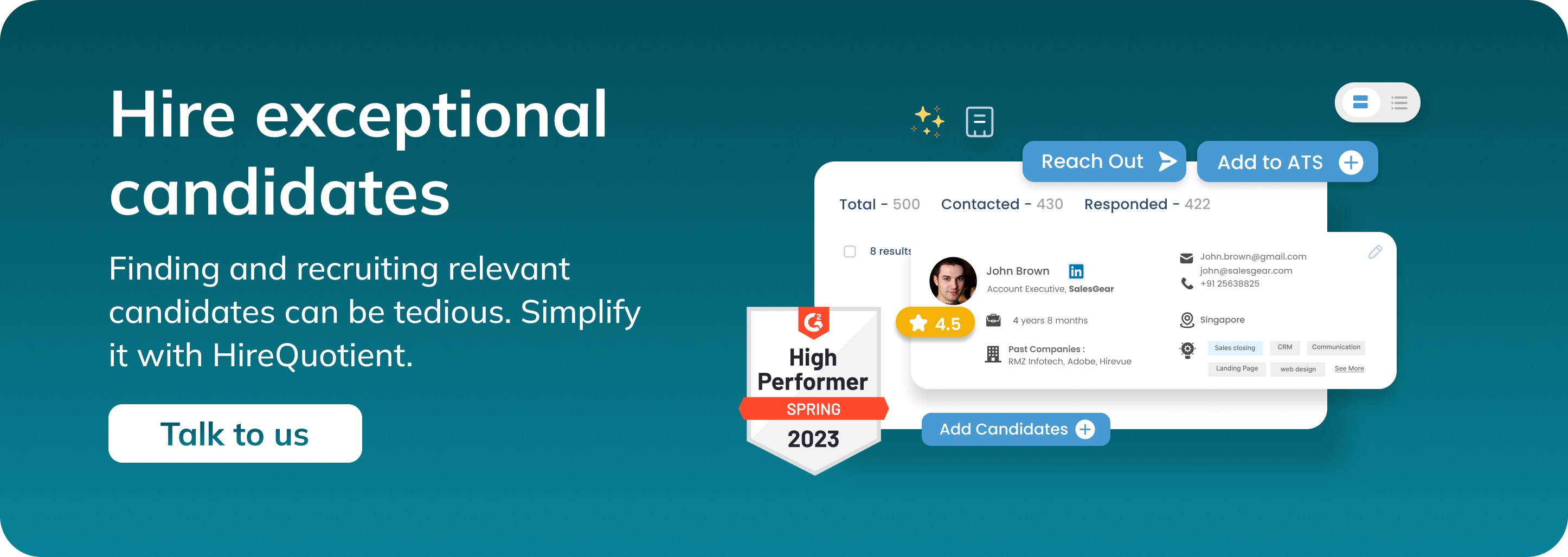What is Turnover Rate?
Turnover is the rate at which employees move in and out of a company. This metric is measured by the number of separations in a month divided by the average number of employees on payroll, multiplied by 100.
Turnover rate, also known as employee attrition rate or staff turnover rate, is a human resources metric that measures the number or percentage of employees who leave an organization over a certain period, typically on an annual basis. It indicates the rate at which employees separate from the company voluntarily (resignations, retirements) or involuntarily (terminations, layoffs).
How to Calculate Employee Turnover Rate
Step 1: Find Your Total Number of Employees
Almost every kind of employee should be factored in; however, don't include temporary hires or employees on temporary leave in any of the factors. Your turnover rate will appear larger than it is if you include temporary shifts in the workforce statistics.
Choose the time frame that you wish to use to compute the turnover rate. The majority of businesses do this on a quarterly or annual basis. Next, determine the average number of workers within that time frame as well as the total number of departing workers, regardless of whether their post has been filled or not.
For instance, you might have had an average of 50 workers in Q1 and 16 departures during that time, none of them due to seasonality or leave.
The turnover rate is calculated by dividing the number of employee separations by the average number of employees during the same period and then multiplying by 100 to express it as a percentage.
Step 2: Multiply and Divide
Divide the average number of employees (50) by the number of departing employees (16). The turnover rate can then be obtained by multiplying the value by 100.
The equation might be, for instance, (16/50) * 100 = 32.
So, 32% is the turnover rate.
This figure shows that during this quarter, about 32% of the workforce departed the organization.
In short, The formula is as follows:
Turnover Rate = (Number of Employee Separations) / (Average Number of Employees) x 100
Organizations may calculate turnover rates for specific departments, job levels, or the overall organization. It can be further segmented into voluntary turnover (employees leaving by choice) and involuntary turnover (employees leaving due to employer-initiated actions).
Also read: What is Attrition Rate?
How high turnover rates can have several implications for organizations?
Cost: Turnover is often associated with significant costs related to recruitment, onboarding, training, and lost productivity. Hiring and training new employees can be expensive, and high turnover rates can strain financial resources.
Disruption: Frequent turnover disrupts the stability and continuity of operations within the organization. It may result in reduced productivity, increased workload for remaining employees, and a loss of institutional knowledge and expertise.
Talent Drain: High turnover can lead to the loss of valuable employees, including those with critical skills, experience, and institutional knowledge. This can impact organizational performance and competitiveness.
Employee Morale: High turnover rates can negatively affect employee morale and engagement. When employees witness frequent departures, it can create uncertainty, decrease job satisfaction, and erode trust in the organization.
Strategies to address high turnover rates
High turnover rates can have significant implications for organizations, including increased costs, disruption to operations, talent drain, and negative impacts on employee morale. To mitigate turnover and retain top talent, organizations can implement various strategies, including:
Exit Interviews and Feedback: Conduct exit interviews with departing employees to gain insights into their reasons for leaving and to identify areas for improvement within the organization. Gathering feedback can help uncover trends and address underlying issues that contribute to turnover.
Competitive Compensation and Benefits: Ensuring that the organization's compensation and benefits packages are competitive within the industry to attract and retain talented employees. Regularly reviewing and benchmarking compensation practices can help identify areas for adjustment.
Employee Development and Career Opportunities: Providing opportunities for professional growth, development, and advancement within the organization. Offering training programs, mentorship, and clear career paths can enhance employee engagement and increase retention.
Work-Life Balance and Well-being Initiatives: Promoting a healthy work-life balance and implementing well-being initiatives that support employee physical and mental health. Flexible work arrangements, wellness programs, and supportive policies can contribute to employee satisfaction and reduce turnover.
Strong Leadership and Communication: Cultivating a positive work environment with strong leadership and open communication channels. Encouraging transparent and regular communication, recognizing employee achievements, and addressing concerns promptly can foster a sense of trust and loyalty among employees.
By incorporating EasySource's candidate sourcing, screening, and engagement modules into turnover reduction strategies, organizations can streamline recruitment processes, identify top talent more efficiently, and create a positive work environment that attracts and retains employees in the long term.
How to analyze your turnover rate
How good or how bad the turnover rate you have calculated depends upon your industry. If we continue with our example, the turnover rate of 32% would be nothing if you are in manufacturing or retail. However, if you are in education, you need to investigate the reasons behind the high turnover rate.
The turnover rate is not just a metric. You should analyze it from different angles to better understand the information hidden behind that number.
To begin, ask these questions:
- Who are the departing employees? Which employees are quitting — the senior ones or the new ones?
- What is the reason behind the employee's departure? If new hires are the ones quitting, is it because they perceive a discrepancy between their expectations and the work being done? To make sure the correct people are applying, do you need to change your job description or give them more training? Perhaps you need to create a career management or upskilling program to keep senior personnel if they are departing.
- Does their leaving follow any pattern? For example, if more workers are quitting shortly before or after the yearly performance review, it's possible that they're not happy with the procedure or your usual increase rates.
How can EasySource help to reduce the high turnover rate?
EasySource, as a candidate sourcing tool, can play a significant role in reducing high turnover rates within organizations. Here's how EasySource can help:
1. Efficient Sourcing: EasySource streamlines the candidate sourcing process by leveraging advanced algorithms to identify and source qualified candidates from various talent pools, including both active and passive candidates.
By ensuring that hiring managers have access to a diverse pool of skilled candidates, EasySource helps reduce turnover by facilitating the recruitment of individuals who are well-suited for their roles.
2. Targeted Screening: EasySource's candidate screening module allows hiring managers to quickly and accurately evaluate candidates based on specific criteria, such as skills, experience, and cultural fit.
By enabling hiring managers to identify candidates who are not only qualified but also aligned with the organization's values and goals, EasySource helps reduce turnover by ensuring that new hires are more likely to thrive and stay with the company long-term.
3. Personalized Engagement: EasySource's candidate engagement module enables hiring managers to craft personalized outreach messages that resonate with candidates on a deeper level.
By tailoring communication to individual candidates' interests, experiences, and career aspirations, EasySource helps foster meaningful connections between candidates and the organization, increasing the likelihood of successful hires and reducing turnover.
4. Internal Talent Mobility: EasySource's integration capabilities allow organizations to tap into their internal talent pool and identify potential candidates for internal mobility opportunities. By facilitating the movement of employees within the organization, EasySource helps reduce turnover by providing employees with opportunities for career growth and advancement without having to leave the company.
5. Data-Driven Insights: EasySource provides hiring managers with valuable data and insights into recruitment metrics, such as time-to-fill, candidate quality, and source effectiveness. By leveraging this data to optimize recruitment processes and make data-driven decisions, EasySource helps reduce turnover by ensuring that hiring managers can identify and address any underlying issues that may be contributing to turnover.
In summary, EasySource helps reduce high turnover rates by streamlining the candidate sourcing process, facilitating targeted screening and personalized engagement, enabling internal talent mobility, and providing valuable data-driven insights. By leveraging EasySource's capabilities, organizations can attract and retain top talent more effectively, ultimately reducing turnover and improving overall organizational performance.


